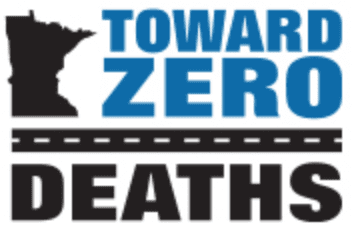A question asked at last week’s Toward Zero Deaths Stakeholders meeting in Two Harbors was, “What should the goal be regarding an acceptable number of traffic deaths, per year, in Minnesota?” In 2003, 655 people were killed on State roadways. That number has come down significantly over the last 20 years thanks to the efforts of a growing number of people, many of whom work behind the scenes, to increase traffic safety for both pedestrians and vehicles in Minnesota.
Toward Zero Deaths is a partnership between the Minnesota Departments of Public Safety, Transportation, Health, the University of Minnesota and other stakeholders. Their mission is to encourage local partnerships between law enforcement, educators, highway engineers, healthcare professionals and concerned citizens, that will lead to a culture in which traffic fatalities and serious injuries are no longer acceptable.
Present at last week’s meeting were the Mayors of Beaver Bay and Two Harbors, representatives from the Lake County Sheriff’s Office, Silver Bay Police Department, Minnesota Highway Patrol, Lake County Public Health, Lake View Hospital, Lake County Highway Department and others. One reason for the push to organize a local TZD group in our area is that doing so now will provide Two Harbors and other Lake County communities with the opportunity to access grant funding that can help stakeholders work to improve traffic safety for all in Lake County. On the Law Enforcement side of the equation, Federal dollars are available to help fund overtime pay so that local law enforcement agencies can increase their ability to provide security and safety for events like the Tall Ships Festival and other North Shore events that attract large crowds. With regard to partnerships, grant funding can help with the purchase of needed materials and activities that stakeholders can use in the community to promote educational programs related to traffic safety. Such activities may include programs in area schools to educate students about the main causes of traffic accidents and fatalities, (speed, not using seat belts, inattentive driving and use of intoxicants). While law enforcement officers and EMS personnel often devote time to these activities, mention was made of an annual, one-day teen-led conference that is held in Thief River Falls where high school students organize and present a day-long informational, hands-on gathering so that their peers can learn about issues related to traffic safety for motorists and pedestrians. There are also programs that are geared toward senior adults and their families, to help senior drivers hone their awareness of traffic safety and, when the time comes, know when it is time to set aside their driver’s license.
Several of the participants at last week’s meeting spoke from their professional perspectives about measures currently being employed to improve traffic safety. While the use of flashing signs to reduce speeds in populated areas can help, more effective measures require things like redesigning roadways and installing roundabouts at intersections. Intersections are often the most dangerous feature that both motorists and pedestrians will encounter. A member of the Highway Department stated that there have not been any deaths at roundabouts, nationwide, since they came into use in the U.S. in the 1990s.
So, consider again that question of what an acceptable number of traffic deaths per year in Minnesota would be. Let’s think about our family members, friends, co-workers and neighbors. What percentage of those folks, perhaps suffering injury or death in a traffic accident, is acceptable?
Readers who are interested in learning more about the work of Toward Zero Deaths can access the TZD website at www.minnesotatzd.org. If you are interested in getting directly involved in Lake County, contact Northeast MN TZD Coordinator, Rahya Geisler at rahya.giesler@state.mn.us or call 218-830-1477.



